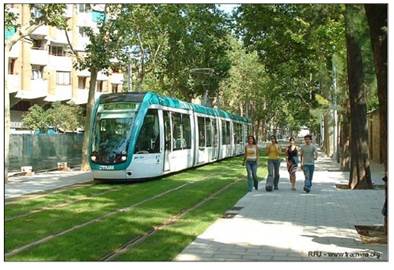As Jalopnik recently reminded us, Cincinnati is home to the "largest abandoned subway system in the United States." Construction of the planned 16-mile system began in 1920 and halted in 1925 when the initial funding of $6 million ran out with the project not quite halfway done. Almost a century and a few failed revivals later, two miles of unused tunnel still run below Central Parkway, one of the main roads through the city.

If Cincinnati isn't careful, its in-progress streetcar system might face a similar fate. Whether or not to finish that project was at the heart of the city's recent mayoral election. Stop-construction candidate John Cranley emerged victorious, and earlier this month the city council put the 3.6-mile project on indefinite pause despite about a half-mile of track already laid.
It can't stay on pause much longer. The Federal Transit Administration, which issued Cincinnati roughly $45 million in funding for the project, has asked for a decision on the project by the end of Thursday.
The big issue for Cranley and the city council is whether local taxpayers should be on the hook for potential operating costs. The new mayor has said he's willing to let construction continue if private donors come up with enough cash to pay for the first 30 years of running the system — a figure that's reportedly around $80 million. The auditing firm KPMG is expected to release results of a cost analysis sometime today.
Operating costs should indeed be a concern for Cincinnati, especially since reports suggest that streetcar fares will only cover a quarter of those costs. That leaves a pretty large gap, but not an impossible one. If the streetcar's potential for economic development is as large as supporters believe, a local value capture program — through which the city recovers costs from property owners who benefit from the system — should be sufficient to pay for operations. (That said, a streetcar's precise economic value is often quite tough to determine.)
Proponents of the project point to the fact that the streetcar has already survived two local referendums aimed at destroying it, and that stopping construction now will itself be a massive waste of money. In an editorial last month, the Cincinnati Enquirer called for the project to be finished, estimating that the city will end up spending $53 million in the best-case scenario and $80 million in the worst — with nothing to show for it. The city has seen this movie before:
This is wasteful and irresponsible, especially with the ghost of the canceled Cincinnati subway still haunting us.
That's not entirely figurative word play. The ghost of the subway does, in a sense, haunt Cincinnati — to the tune of millions that must be spent every now and then to maintain the unused tunnels that run below a major road. Call it an anti-operating cost. Those must be calculated, too.


